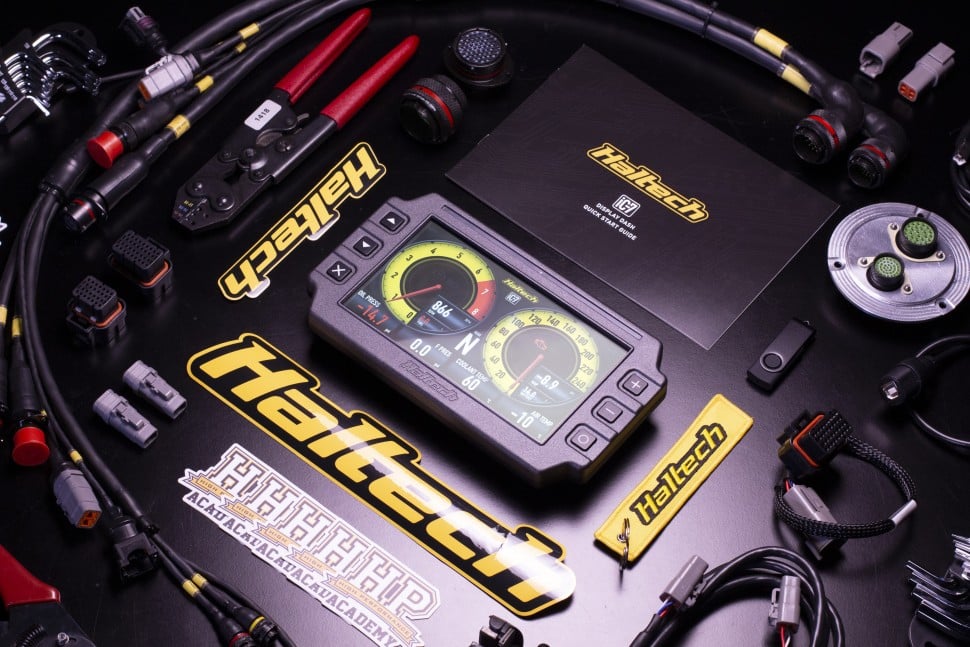| 00:00 |
While not usually thought of as an aerodynamic performance part, the suspension is critical to how the whole car's aerodynamic platform behaves, and as such it's important to understand a few basics about what we need to do when the aerodynamics on the car are changed.
|
| 00:15 |
A side note before we get into it, if you get to the end of this module and find yourself wanting to know more, High Performance Academy's Suspension Tuning and Optimization course is going to be the perfect next step.
|
| 00:27 |
It covers everything we discuss here in much more detail, plus a lot more.
|
| 00:31 |
Let's get started.
|
| 00:32 |
As we add downforce to a car, the amount of vertical load we have placed on the suspension will increase significantly, forcing the suspension to compress more.
|
| 00:42 |
In addition to this, the grip available also increases, so our lateral and longitudinal accelerations become higher.
|
| 00:49 |
Both of these factors drive us to require stiffer suspension than on a car without aero, as otherwise the car will be very soft and will have poor platform control.
|
| 00:58 |
Imagine if we had a big splitter generating 1000kg of downforce on a car with a factory springing setup.
|
| 01:04 |
The car would be driven straight into the ground and the splitter would just be dragging along the surface of the track, which obviously is something we don't want.
|
| 01:12 |
This leads into something we've talked about before, which is the ride height sensitivity of aerodynamic devices in ground effect.
|
| 01:19 |
One of the things we want to do is minimize the variance in ride height for devices like front splitters and rear diffusers, and the best way to achieve this is with stiffer suspension.
|
| 01:29 |
Ideally, from a purely aerodynamic perspective, we'd have the car sprung rock solid at our optimum ride heights for peak downforce.
|
| 01:37 |
However, this will result in a car with extremely poor mechanical grip.
|
| 01:41 |
As we stiffen our suspension, mechanical grip will worsen.
|
| 01:45 |
One of the compromises we can make here relies on the fact that aero grip is more dominant at high speeds, while mechanical grip is more dominant at low speeds.
|
| 01:54 |
This means that if we can have a softer spring rate at low speeds, but then a stiff rate at high speeds, we can get the best of both worlds.
|
| 02:02 |
This is where bump rubbers come in.
|
| 02:04 |
Proper aero cars don't use factory bump rubbers.
|
| 02:07 |
They use a progressive stack of specially designed progressive bump rubbers that keeps them soft in the middle of the suspension travel, but then when the aero starts to compress the suspension more, the bump rubbers engage and the car becomes stiffer.
|
| 02:20 |
The main difference between these progressive bump rubbers and factory-style bump rubbers is that the progressive bumps engage much more gently, so we don't lose large amounts of grip as the suspension stiffness rapidly increases, which is what happens with factory rubbers.
|
| 02:37 |
This is definitely an approach we should consider if we have a medium to high downforce club level car.
|
| 02:42 |
Let's summarize what we've covered before finishing up with this section of the course.
|
| 02:47 |
Suspension plays a critical role in a car's aerodynamic performance, especially as downforce increases, adding vertical load and requiring stiffer suspension for proper platform control.
|
| 02:59 |
Stiffer suspension minimizes ride height variance, which is essential for maintaining the effectiveness of aerodynamic devices like splitters and diffusers, but it also reduces mechanical grip.
|
| 03:10 |
To balance high-speed aero grip with low -speed mechanical grip, progressive bump rubbers are used, providing softer travel under low loads and then increasing stiffness as downforce compresses the suspension.
|
| 03:22 |
This progressive approach avoids the harsh grip loss seen with factory bump rubbers and is ideal for medium to high downforce club level cars.
|





